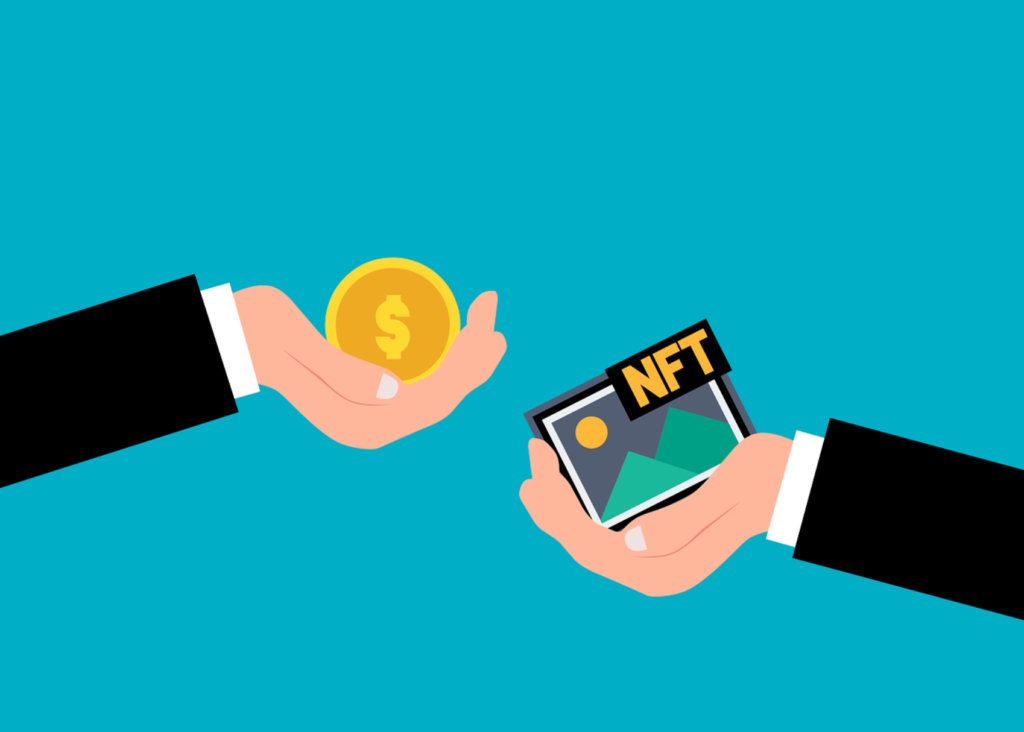The NFT Market is Declining. Here’s Why.
Byline: Hannah Parker
NFTs are popular among those interested in cryptocurrencies and those who want to experiment with cutting-edge technology. Like anything new, NFTs could progress from cutting edge to bleeding edge.
NFTs are present everywhere right now. NFTs are in demand for usages like digital painting and music recording. Even the use of NFTs for in-game items for video games has been proposed. However, many people will scream about how dangerous NFTs are in addition to this.
If that’s the case, why do people buy them? Why do companies, well-known individuals, and groups sell them? If you need clarification about something, you’re in the right place.

What are NFTs?
Non-fungible tokens are a particular class of asset that only exists digitally. A blockchain and a digital ledger are used to record ownership, similar to cryptocurrencies, which are connected to and covered in our entire explainer on NFTs.
NFTs, on the other hand, is unique compared to cryptocurrencies because they are non-fungible, which means they cannot be used interchangeably. This is different from cryptocurrencies, where each unit or coin may be swapped for another—much like real-world currencies—making every NFT unique. The value of currencies comes in the ability to swap any single kind for any other of the same sort, making NFTs a poor form of exchange because each one is unique.
NFTs are less desirable than money, but collectors find them quite intriguing. After all, if something is unique, someone will undoubtedly want to own it. Anything unusual can make it worthwhile to desire, whether a unique coin or a limited-edition set of a well-known video game.
NFTs are protected legally under copyright laws. According to Harry Richt, a New York-based lawyer, who explained to us that “the purchaser of the NFT obtains the right to show or sell that specific NFT,” the creator of an NFT by default keeps all the exclusive rights, including the right to produce copies of the work. According to Mr. Richt, the author has the authority to take legal action against copyright violators.
Max Dilendorf, another New York-based lawyer, made a similar observation, pointing out that the ownership of the intellectual property in NFTs is “a contractual matter, reliant on the platform” you buy the NFT from. Various platforms have different copyright regulations.
The Reason For NFTs Are Declining
Digital asset aficionados’ fun is being ruined by more than just people trying to cash in on the NFT craze; there are also real security risks with the digital tokens, which have led to their suspension from Steam, for instance.
Your certificate of authenticity is more of a link to a record of your purchase than a physical certificate. Your evidence of ownership will vanish if the server the links connect to goes offline, and you won’t be able to retrieve it. In essence, there are people out there who have invested millions in digital assets that are vulnerable to complete erasure with the failure of a single server. This discourages many people from adopting the NFT craze.
There are many dubious blockchain ventures, but the NFT sector is full of fraud. Shady developers selling essential assets on marketplaces make up a sizable chunk of the NFT economy. Given the relative ease of putting up a website and selling false works of art or sports memorabilia, this presented a golden opportunity for con artists. Additionally, the market is reacting appropriately. One of the leading causes of the NFT value’s sharp decline was the lackluster response to dubious NFT market operations. People need to use these fundamental marketplaces, and the market is growing slowly.
In data found by Bitcode Method Official, the worldwide cryptocurrency market has decreased from $1.02 trillion to $970.03 billion, a 15% decline since January 2022. Recently, all major cryptocurrencies have been trading in the red, putting even long-term investors to the test. The floor price of NFTs was directly impacted when the price of Ethereum fell by more than 50%.
NFTs’ key selling point is their practical utility. Everything that is sold on a marketplace can later be sold again. Even though it works especially for digital art, it could be more helpful for digital goods like clothing or footwear. In the actual world, there are no obvious application cases for NFTs. Because of this, almost all widely used NFTs are digital art. In the real world, it is the only thing that makes sense. Furthermore, while controlled markets may contribute to the rise in the value of NFTs, they will only be worth something if the blockchain project at its core fails.
The blockchain industry is tremendously hyped up, and every new initiative will revolutionize society. However, the reality is that only a small percentage of blockchain ventures succeed, while the majority fail. The intermediaries in centralized markets take a percentage of each sale of a digital asset. Additionally, they have high listing costs and offer no assurance that the thing you purchase won’t be fake. Therefore, despite the success of centralized marketplaces, Initial Coin Offerings (ICOs) and NFTs have unique issues.
After the initial euphoria that preceded their surge in popularity, the market for non-fungible tokens (NFTs) has collapsed. Many NFTs saw a dramatic decline in value, which led some people to wonder about their long-term viability. There were several contributing variables, but the sell-off in digital assets over the previous three months was the main one. The cryptocurrency markets are highly unpredictable for investors, and it’s impossible to predict when the next bull run will occur. The NFT market may become the newest trendy investment once prices rise again.
This article has been published in accordance with Socialnomics’ disclosure policy.









